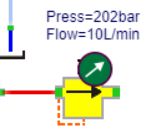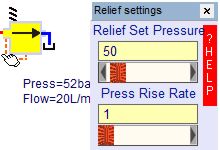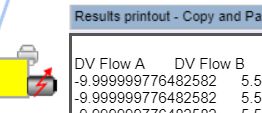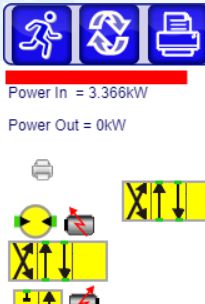Self-study lesson plans and training record download page.
Choose a circuit to operate
Select a circuit from the drop-down list box in the top button menu bar.
These instructions will show you how the basic circuit operation works.
Component descriptions
Move the mouse over each component to see its type name, size, and setting displayed just below the top menu bar.
Click to operate each valves

Left-click on the button or solenoid to operate the valve. The arrow shows which solenoid is powered. Click between the buttons to activate both at the same time, as per normal operation. The buttons can also be used as limit switches if they are moved in contact with the cylinder.
Move test gauge to investigate performance

Click and drag the test gauge over an object or pipe to see the conditions inside. Or left-click on the object.
The pipe flow may show as both positive and negative. This is because the program checks both directions along the pipe and looking in one direction it will be positive and the other direction negative.
Adjust a valve size or settings

Left-click on a component to open its data window.
Select the type of valve and settings from the drop-down list.
Run test, Get results

Drag the small printer icon onto (or under) a component.
Press the large printer button in the top menu bar to open the results window.
Press the large print button every time you wish to take a new reading.
Copy and paste (as .csv) results into a spreadsheet to plot a graph.
Modify To Create Your Own Circuit

Click the 'Tools/Run' button at top left of the menu bar. The simulation will stop.
Click and drag components and pipes to move them.
When finished press the refresh button to redefine the circuit. The circuit can only be saved in the .exe version.
Press the run button to test and save your new circuit. We recommend you reload the circuit to check that it has been built and saved properly.
Pipe types

Choose between a main pipe which carries all of the pressure, flow, and load data; or a pilot pipe which only transmits the pressure signal. Pilot pipes can also be placed over main pipes to pick up the pressure whereas main pipes must be connected with valve or junction.
New pipes grow from the single dots and must be located very onto the green dots.